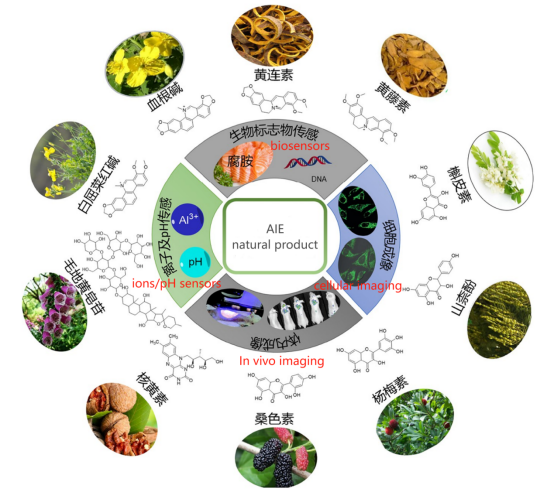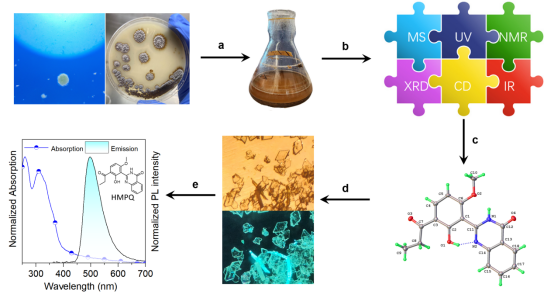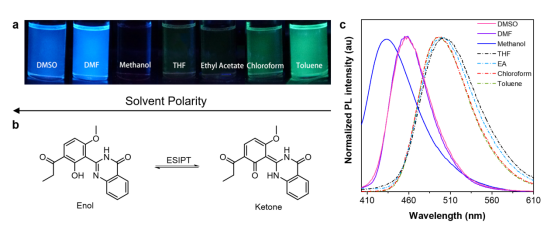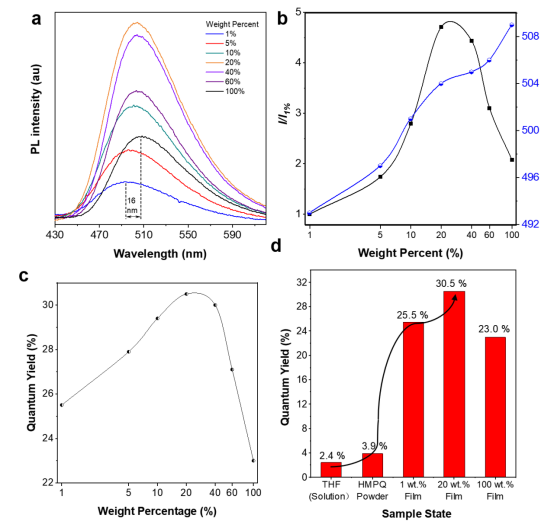Recently, Prof. Qian Peiyuan’s team from Southern Marine Science and Engineering Guangdong Laboratory (Guangzhou), in collaboration with Chinese Academy of Sciences academicianTang Benzhong from The Chinese University of Hong Kong (Shenzhen) and Professor Zhu Guang from The Hong Kong University of Science and Technology, identified a quinazolinone alkaloid, HMPQ, with Aggregation-Induced Emission (AIE) properties from marine bacterial secondary metabolites for the first time. The study revealed that HMPQ exhibits different luminescent behaviors in various polar solvents and solid-state polymorphs. Additionally, HMPQ shows specific binding affinity to G-quadruplex (G4) nucleic acid structures, illuminating these structures without altering their conformations. Its excellent safety profile and precise visualization capability of G4 structures in cells highlight HMPQ’s significant potential in biological applications, providing new insights for developing next-generation BioAIEgens as efficient G4 probes.

**Figure 1. Reported plant-derived AIE natural products and their applications in fluorescence sensing and bioimaging**

**Figure 2. Discovery of the microbial-derived AIE small molecule HMPQ**

**Figure 3. Photophysical characterization of HMPQ in solution state**

**Figure 4. Photophysical characterization of HMPQ in aggregated state**

**Figure 5. The two crystalline polymorphs of HMPQ exhibit completely different luminescence properties**

**Figure 6. HMPQ can specifically bind to G-quadruplex and light up this structure both inside and outside the cell**
This research, titled “Discovery of a novel marine bacterial AIEgen that lights up specific G-quadruplexes,” was recently published in the Chemical Engineering Journal (a top-tier Q1 journal in all journal rankings, Impact Factor: 13.3). Professors Qian Peiyuan, Tang Benzhong, and Zhu Guang are the corresponding authors of the paper. Drs. Ye Wenkang and Wang Xinnan from The Hong Kong University of Science and Technology are the co-first authors. The primary affiliation is the Southern Marine Science and Engineering Guangdong Laboratory (Guangzhou).
The study was supported by the Southern Marine Science and Engineering Guangdong Laboratory (Guangzhou), the Hong Kong Research Grants Council, the Hong Kong Innovation and Technology Commission, the National Science Foundation of China, and the Key Research and Development Project of Yunnan Province.
Attachment download:
